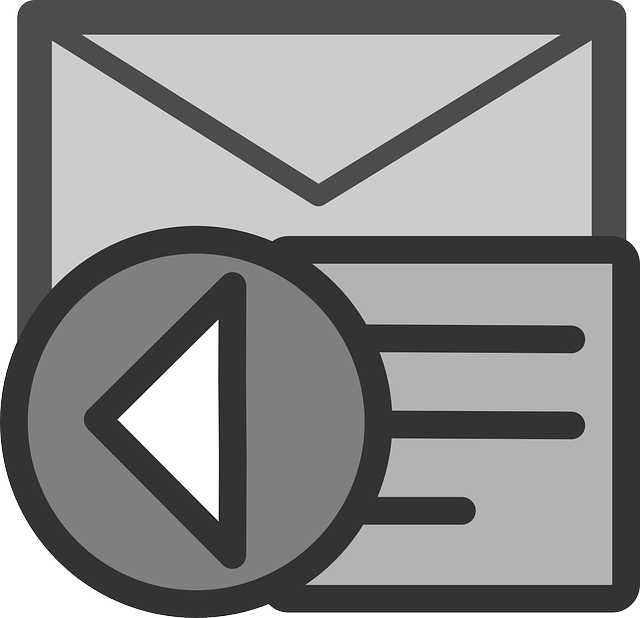Are you ready to transform your nonprofit organization into a bustling hub of engaged supporters and generous donors?
Picture this: a vibrant community of individuals who are passionate about your cause, eagerly awaiting your updates, and excitedly contributing to your mission.
How can you make this vision a reality? By mastering the art of email list building.
Building an email list is like laying the foundation for a strong and sustainable future for your nonprofit. With the right strategies in place, you can captivate your target audience, entice them to join your email list, and ultimately drive more donations.
In this article, we will guide you through the essential steps to engage your supporters and build a thriving email list. From understanding your target audience to optimizing your website and utilizing social media, we will equip you with the tools you need to maximize your impact and achieve your fundraising goals.
Get ready to unlock the power of email list building and watch your nonprofit soar to new heights.
Key Takeaways
- Understanding your target audience and their motivations is crucial for effective email list building.
- Compelling opt-in incentives (exclusive content, discounts) can entice supporters to join your email list.
- Optimizing your website with eye-catching opt-in forms and strategic placement can increase conversions.
- Social media can be utilized to build your email list by targeting specific demographics and collaborating with influencers.
Understanding Your Target Audience
Do you know who your target audience is and how to effectively engage them to drive donations for your nonprofit? Understanding donor motivations and conducting audience research are crucial steps in building an email list for your organization.
Take the time to dig deep and discover what inspires your potential supporters to give. Are they motivated by a personal connection to your cause? Or are they driven by a desire to make a difference in their community?
Once you have a clear understanding of their motivations, you can tailor your messaging and content to resonate with them on a deeper level. By effectively engaging your target audience, you can create a sense of connection and inspire them to take action.
When you continue to the next section about creating compelling opt-in incentives, you’ll discover how to further entice your audience to join your email list and support your cause.
Creating Compelling Opt-In Incentives
Get ready to captivate your audience by offering irresistible perks that’ll make them eager to join your community! Creating compelling opt-in incentives is crucial for building an effective email list for your nonprofit.
By offering incentives, such as exclusive content, discounts, or access to events, you can increase the effectiveness of your email list building efforts. These incentives provide value to your supporters and give them a reason to share their contact information with you.
However, it’s important to consider alternative strategies as well. For instance, you can offer a free trial of your services or provide a downloadable resource that aligns with your nonprofit’s mission. By thinking outside the box and testing different incentives, you can find what works best for your target audience.
Now, let’s move on to optimizing your website for opt-ins and maximizing your email list growth.
Optimizing Your Website for Opt-Ins
To optimize your website for opt-ins, start by designing eye-catching opt-in forms that grab your visitors’ attention. Use vibrant colors, compelling copy, and clear call-to-action buttons to entice them to sign up for your email list.
Additionally, strategically place these opt-in forms throughout your website, making sure they are easily visible and accessible. By doing so, you’ll increase the chances of converting your website visitors into loyal supporters and donors.
Design eye-catching opt-in forms
Transform your website into a captivating hub of interaction by incorporating visually stunning opt-in forms that effortlessly capture the attention of potential supporters and inspire them to join your nonprofit’s email list.
To ensure maximum effectiveness, use A/B testing to experiment with different designs and layouts. Consider the psychology of colors when choosing the palette for your forms, as certain colors can evoke specific emotions and influence actions.
Additionally, make sure your forms are mobile-friendly to cater to the growing number of users accessing the internet through their smartphones.
Once you have designed eye-catching opt-in forms, the next step is to strategically place them on your website to increase visibility and engagement.
Transitioning into the subsequent section, learn how to strategically position your opt-in forms to maximize their impact on your website’s visitor conversion rates.
Place opt-in forms strategically on your website
Positioning your opt-in forms strategically on your website helps you capture the attention of potential supporters and encourages them to take action. Opt-in form placement is crucial for conversion rate optimization, as it determines how effectively you can grow your email list and drive donations.
Start by placing opt-in forms on high-traffic pages, such as your homepage or blog posts. Make sure they’re easily visible and stand out from the rest of the content. Consider using pop-ups or slide-ins to grab visitors’ attention.
Additionally, place opt-in forms at the end of your blog posts or in the sidebar for maximum exposure. These strategic placements will increase the chances of visitors subscribing to your email list and becoming active supporters.
Now, let’s explore how utilizing social media for list building can further enhance your nonprofit’s reach.
Utilizing Social Media for List Building
Using social media is a great way to build your email list and connect with supporters, driving donations for your nonprofit. Social media ads can be a powerful tool for reaching a wider audience and promoting your opt-in forms.
By targeting specific demographics and interests, you can attract potential supporters who are more likely to engage with your cause. Additionally, collaborating with influencers in your niche can help expand your reach and credibility. Influencers can share your opt-in forms with their followers, increasing the chances of gaining new subscribers.
Once you have successfully built your email list through social media efforts, it’s important to implement email marketing best practices to maximize engagement and conversions. Transitioning into implementing email marketing best practices, you can use strategies such as personalization and segmentation to deliver targeted content that resonates with your supporters.
Implementing Email Marketing Best Practices
Once you have successfully grown your subscriber base, it’s crucial to apply effective email marketing strategies to boost open rates and click-through rates. One strategy is personalization, which can increase open rates by 26%. Another strategy is segmentation, where you segment your email list based on demographics, interests, or past interactions. This allows you to tailor your messages to specific groups, increasing relevance and engagement. A/B testing is also important, as it helps you experiment with different email elements to identify what resonates best with your audience. By testing variations and analyzing the results, you can optimize your emails for higher conversions. Implementing these strategies will help you maximize the impact of your email campaigns. Next, we’ll explore how analyzing and optimizing your email campaigns can further enhance your nonprofit’s success.
Analyzing and Optimizing Your Email Campaigns
To effectively analyze and optimize your email campaigns, you need to track open rates and click-through rates. By monitoring these metrics, you can gain insights into how engaging your emails are and make necessary improvements.
Additionally, testing different subject lines and content formats allows you to understand what resonates best with your audience. This ultimately increases the effectiveness of your email marketing efforts.
Track open rates and click-through rates
Keep tabs on how your emails are performing by tracking open rates and click-through rates. This will allow you to feel the pulse of your audience and inspire them to take action.
Open rate analysis provides valuable insights into how many recipients are actually opening your emails, giving you an indication of the effectiveness of your subject lines and sender name.
By optimizing your click-through rates, you can encourage supporters to engage further with your content, leading to increased donations and support. Experiment with different subject lines and content formats to see what resonates best with your audience and improves these rates.
This will help you refine your email campaigns and drive even more engagement and donations from your supporters.
Test different subject lines and content formats
Experimenting with diverse subject lines and captivating content formats can dramatically enhance the effectiveness of your email campaigns, ensuring maximum engagement from your audience. To optimize your email marketing strategy, consider conducting A/B testing on subject lines.
This allows you to compare the open rates and click-through rates of different subject lines and identify the most compelling ones. Additionally, incorporating video content formats in your emails can significantly boost engagement. Videos grab attention and provide an interactive experience for your supporters.
Try embedding short videos that highlight your nonprofit’s impact or showcase success stories. This will captivate your audience and increase the likelihood of them taking action or making donations. Remember, testing and experimenting with subject lines and content formats is crucial to finding what resonates best with your supporters.
Frequently Asked Questions
How can I effectively segment my email list to target specific groups within my nonprofit’s target audience?
To effectively segment your email list and target specific groups within your nonprofit’s target audience, use segmentation strategies and targeted messaging.
Start by analyzing your audience’s demographics, interests, and past interactions with your organization. Then, create segments based on these factors and tailor your messages accordingly.
Personalize your emails by addressing recipients by name and delivering content that’s relevant to their interests. This approach will help you engage supporters and drive donations.
Are there any legal considerations or regulations I need to be aware of when collecting and using email addresses for my nonprofit’s email list?
When collecting and using email addresses for your nonprofit’s email list, there are legal considerations and consent regulations you need to be aware of.
It’s crucial to ensure that you have the proper consent from individuals before adding them to your list. Familiarize yourself with privacy laws and regulations to avoid any legal issues.
Always provide clear information on how their data will be used, and give them the option to unsubscribe at any time. Compliance is key to building trust and maintaining a positive relationship with your supporters.
What are some creative ways to engage and incentivize supporters to opt-in to my nonprofit’s email list?
To creatively incentivize supporters to opt-in to your nonprofit’s email list, offer exclusive content or resources that align with your mission. Consider creating interactive quizzes, surveys, or polls that allow supporters to actively engage with your cause.
Reward opt-ins with access to behind-the-scenes content, early event registration, or exclusive discounts. Engage supporters through interactive content such as videos, webinars, or live Q&A sessions.
By offering unique and engaging incentives, you can encourage supporters to join your email list and strengthen their connection to your nonprofit.
How can I integrate my nonprofit’s email list building efforts with our existing CRM or database management system?
To integrate your nonprofit’s email list building efforts with your existing CRM or database management system, you might be concerned about the complexity and time it’ll take. However, there are CRM integration strategies designed specifically for nonprofits. These systems streamline the process by automatically syncing contact information, donation history, and engagement data.
Look for database management systems for nonprofits that offer seamless integration with popular email marketing platforms, making it easier to manage your email list and nurture supporter relationships.
What are some key metrics or indicators I should be tracking and analyzing to measure the success of my nonprofit’s email campaigns?
To measure the success of your nonprofit’s email campaigns, focus on key metrics like open rates, click-through rates, conversion rates, and unsubscribe rates. These metrics help gauge engagement and the effectiveness of your email content.
Additionally, track the number of donations or actions taken as a result of your campaigns. Analyzing these metrics will provide valuable insights into the impact of your email campaigns and allow you to refine your strategies for better email campaign success.
Conclusion
So, now you know the key strategies for email list building for nonprofits. By understanding your target audience and creating compelling incentives, you can engage supporters and drive donations effectively.
Don’t forget to optimize your website and leverage social media to expand your reach. And remember, email marketing best practices are crucial for success.
But here’s a thought: Can you afford to ignore the power of email marketing when it comes to growing your nonprofit and making a real impact?





